April 2025
The global electric vehicle battery recycling market size is calculated at USD4.91 billion in 2024 and is expected to be worth USD 74.87 billion by 2034, expanding at a CAGR of 31.34% from 2024 to 2034.
Unlock Infinite Advantages: Subscribe to Annual Membership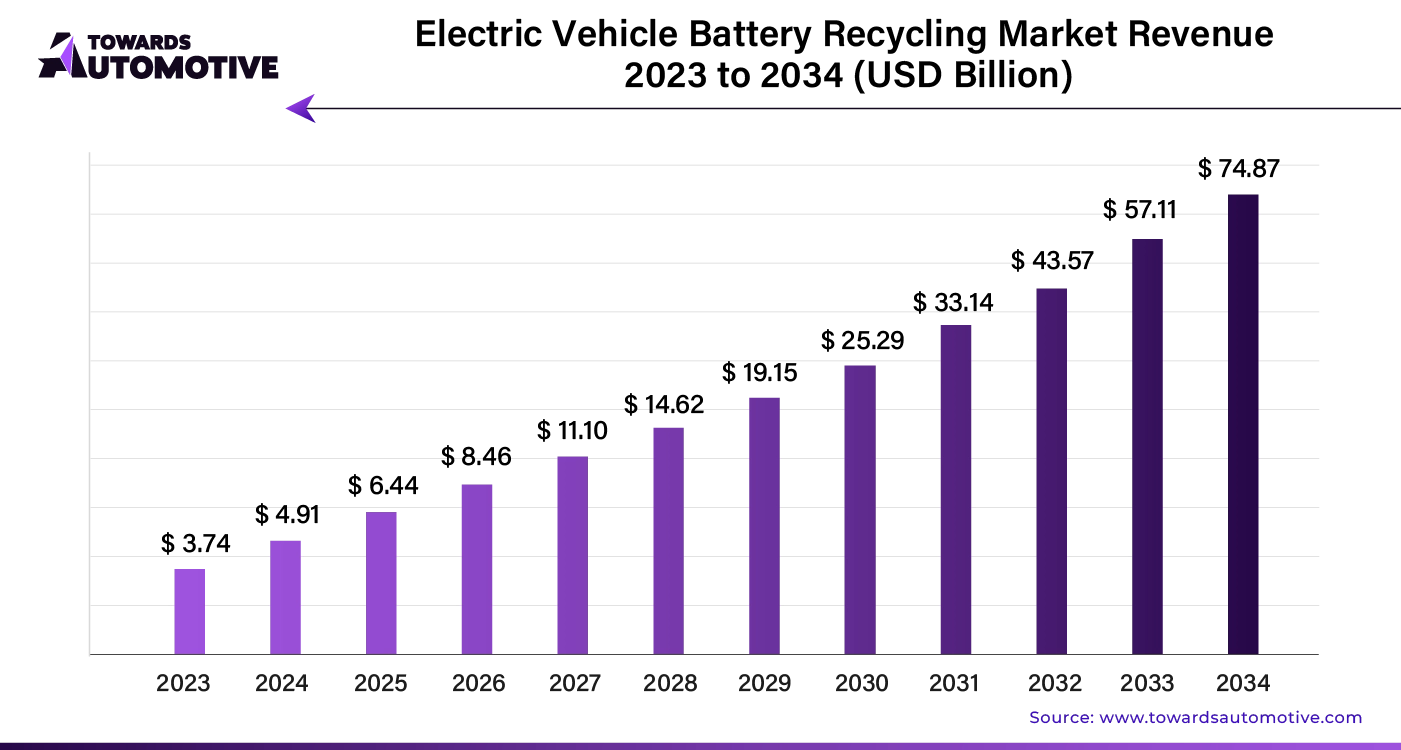
The electric vehicle battery recycling market is rapidly gaining momentum as the adoption of EVs continues to rise globally. With the increasing use of lithium-ion batteries in electric vehicles, there is a growing need for sustainable solutions to manage battery disposal and recycling. Recycling EV batteries not only addresses environmental concerns related to hazardous waste but also helps recover valuable materials such as lithium, cobalt, and nickel, which can be reused in manufacturing new batteries. This reduces the dependency on mining for raw materials and supports a circular economy.
Governments and regulatory bodies worldwide are implementing stricter regulations around battery disposal, further driving the demand for efficient recycling processes. Additionally, advancements in recycling technologies are improving the efficiency of material recovery, making battery recycling more economically viable.
As the EV market expands, the recycling sector is expected to play a crucial role in managing the lifecycle of EV batteries and reducing the environmental footprint of electric vehicles. Investments in recycling infrastructure and innovation are set to drive growth in the electric vehicle battery recycling market, supporting both environmental sustainability and the long-term viability of the EV industry.
AI plays a crucial role in the electric vehicle (EV) battery recycling market by enhancing the efficiency, accuracy, and cost-effectiveness of the recycling process. One key area where AI is making an impact is in the sorting and disassembly of used EV batteries. AI-powered robots and automated systems can quickly identify and separate different types of battery materials, such as lithium, cobalt, and nickel, with higher precision than manual processes. This speeds up recycling and improves the recovery of valuable materials, reducing waste.
Additionally, AI is used in predictive analytics to assess battery health and determine the optimal time for recycling or repurposing batteries. By analyzing data on battery usage patterns, charging cycles, and degradation, AI helps recyclers maximize the lifecycle of batteries, making the recycling process more efficient.
AI also contributes to optimizing the logistics of battery collection, ensuring that batteries are gathered from various locations in the most cost-effective and environmentally friendly manner. Furthermore, machine learning algorithms help refine recycling techniques over time, continuously improving efficiency and lowering operational costs.
The rising sales of electric vehicles (EVs) are significantly driving the growth of the electric vehicle battery recycling market. As more consumers and businesses transition to EVs, the number of lithium-ion batteries reaching the end of their lifecycle is increasing rapidly. These batteries, once depleted, require proper recycling to prevent environmental hazards and to recover valuable materials like lithium, cobalt, and nickel. The surge in EV adoption directly increases the volume of used batteries, creating a growing demand for effective recycling solutions.
Additionally, governments worldwide are implementing stricter regulations regarding battery disposal and recycling, further pushing the need for robust recycling infrastructures. Recycling not only helps mitigate the environmental impact of battery waste but also ensures a steady supply of critical raw materials that can be reused in the production of new batteries. This reduces reliance on mining, which can be environmentally damaging and costly.
The rising sales of EVs also encourage innovation in battery recycling technologies, making the process more efficient and economically viable. As the EV market continues to expand, the need for sustainable battery recycling solutions will grow, driving significant opportunities in the electric vehicle battery recycling market.
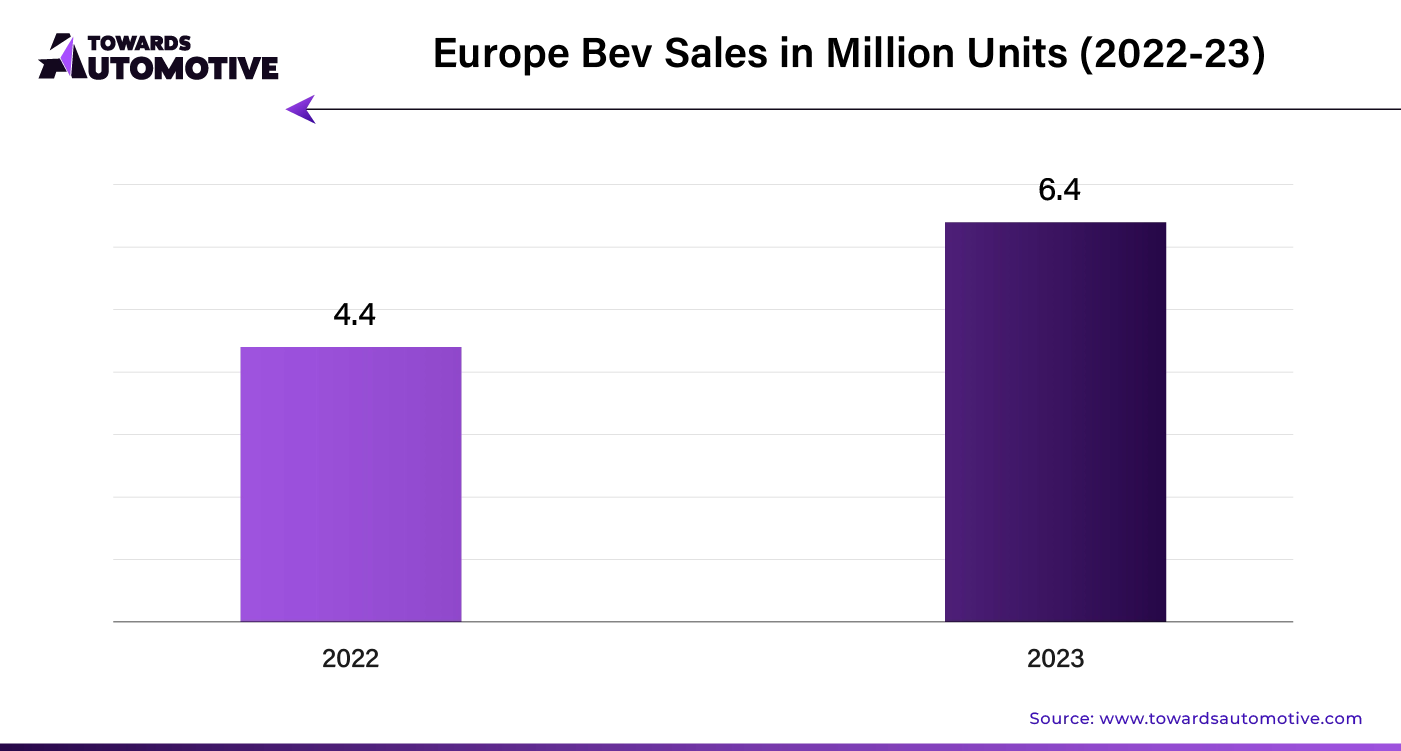
The electric vehicle battery recycling market faces several restraints that hinder its growth. One of the primary challenges is the high cost of recycling technologies. Current processes for extracting valuable materials from used batteries, such as lithium, cobalt, and nickel, are complex and require advanced equipment, making them expensive and less economically viable for many recycling companies. Additionally, the lack of standardized recycling protocols across different regions and manufacturers complicates the process, as varying battery chemistries and designs require different recycling approaches.
Improved recycling infrastructure is creating significant opportunities in the electric vehicle (EV) battery recycling market by enhancing the efficiency, capacity, and effectiveness of battery processing. As the volume of end-of-life EV batteries increases with rising EV adoption, the demand for advanced recycling facilities grows. Investments in new recycling plants and the upgrading of existing facilities are crucial in addressing this demand, enabling better handling, sorting, and processing of used batteries. Modernized infrastructure allows for more sophisticated recycling technologies, such as hydrometallurgy and advanced pyrometallurgy, which improve the recovery rates of valuable materials like lithium, cobalt, and nickel.
Enhanced infrastructure also supports better logistical management, facilitating the collection and transportation of batteries from various sources to recycling centers. This reduces operational costs and minimizes environmental impacts associated with improper disposal. Additionally, increased capacity and efficiency in recycling operations contribute to cost reductions, making battery recycling more economically viable. By creating a more robust and scalable recycling network, improved infrastructure not only addresses current challenges but also stimulates innovation and investment in the recycling sector, driving sustainable growth in the electric vehicle battery recycling market.
The lithium-based segment held the dominant share of this industry. The lithium-based segment is a significant driver of growth in the electric vehicle battery recycling market due to its widespread use in modern EVs and the high value of lithium as a recyclable material. Lithium-ion batteries, which are the most common type used in electric vehicles, are known for their high energy density, long life cycles, and relatively lightweight characteristics. As the adoption of electric vehicles continues to rise, the number of end-of-life lithium-ion batteries is also increasing, creating a growing demand for effective recycling solutions.
Recycling lithium-ion batteries is particularly important because lithium is a critical raw material used in the production of new batteries. Recovering lithium from used batteries helps reduce dependence on mining, which is both environmentally challenging and costly. Efficient recycling processes can reclaim up to 95% of the lithium from spent batteries, making it a valuable resource for the production of new batteries and contributing to a more sustainable supply chain.
Additionally, advancements in recycling technologies specific to lithium-ion batteries are enhancing the efficiency and cost-effectiveness of material recovery. Innovations such as improved hydrometallurgical techniques and direct recycling methods are being developed to better handle the complexities of lithium-based battery chemistries and improve the overall yield of valuable materials.
The growth of the lithium-based segment in the EV battery recycling market is also supported by increasing regulatory pressures and environmental incentives aimed at promoting sustainable practices. Governments and environmental agencies are implementing stricter regulations and offering incentives for recycling lithium-ion batteries, which further drives investment in recycling infrastructure and technologies.
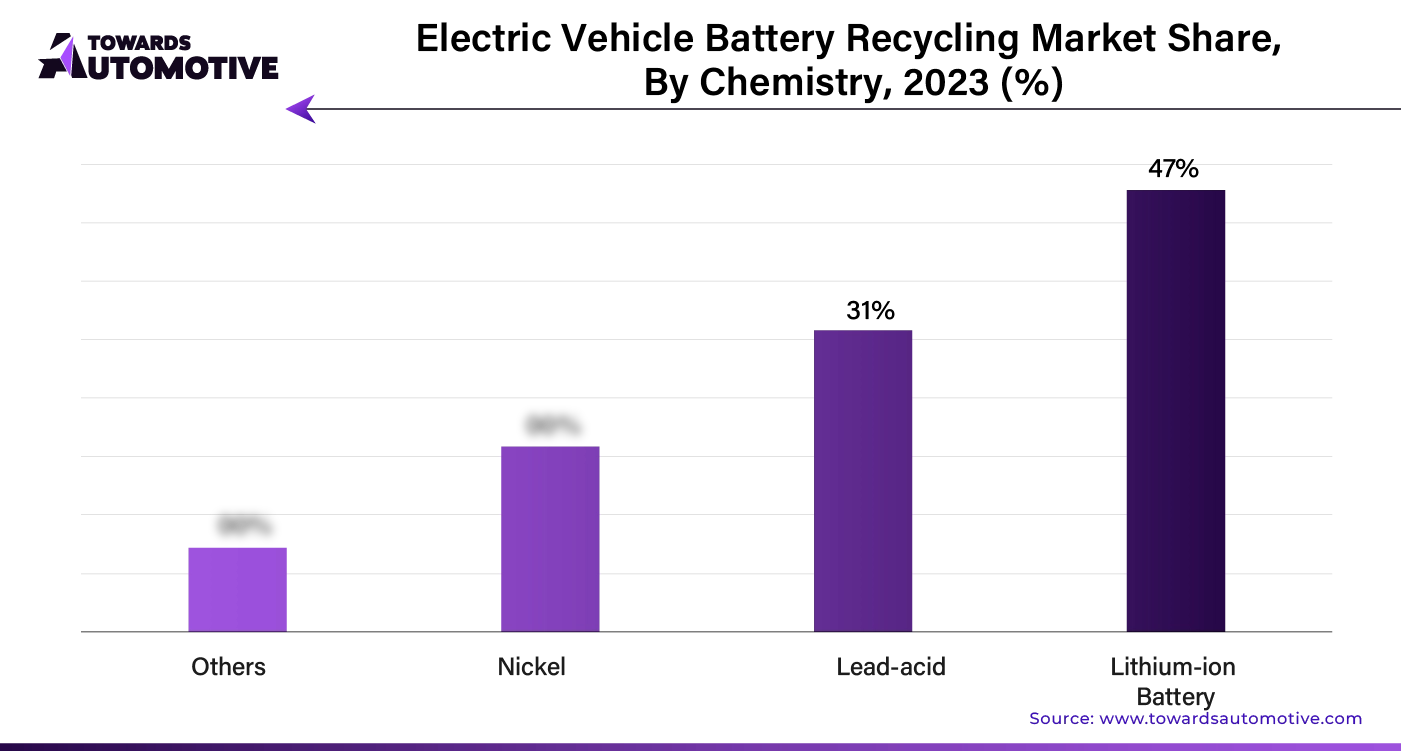
The electric automobiles segment led the market. The electric automobile segment is a major catalyst for the growth of the electric vehicle battery recycling market due to the increasing proliferation of electric vehicles and the subsequent rise in end-of-life batteries requiring recycling. As electric automobiles become more popular, driven by environmental concerns, government incentives, and advancements in EV technology, the volume of lithium-ion and other battery types used in these vehicles is growing rapidly. This surge in battery use translates directly into a higher demand for effective and efficient recycling solutions.
Electric vehicles predominantly use lithium-ion batteries, which are known for their high energy density and long lifespan. However, as these batteries approach the end of their lifecycle, they need to be processed to recover valuable materials like lithium, cobalt, and nickel. The recycling of these materials is crucial not only for reducing environmental impact but also for ensuring a sustainable supply of critical raw materials needed for new battery production. As the electric automobile market expands, the need for advanced recycling infrastructure and technologies becomes increasingly important to handle the growing volume of used batteries.
Moreover, the electric automobile sector's growth drives innovation in recycling technologies. Companies are investing in research and development to improve the efficiency of material recovery from used EV batteries and to develop more sustainable recycling processes. These advancements are aimed at addressing the complexities of battery chemistries and enhancing the economic viability of recycling operations.
Government policies and regulations also support this growth, with many countries implementing stricter recycling mandates and providing incentives for battery recycling initiatives. Together, these factors contribute to the robust growth of the electric vehicle battery recycling market, driven by the expanding electric automobile segment and the increasing focus on sustainability and resource recovery.
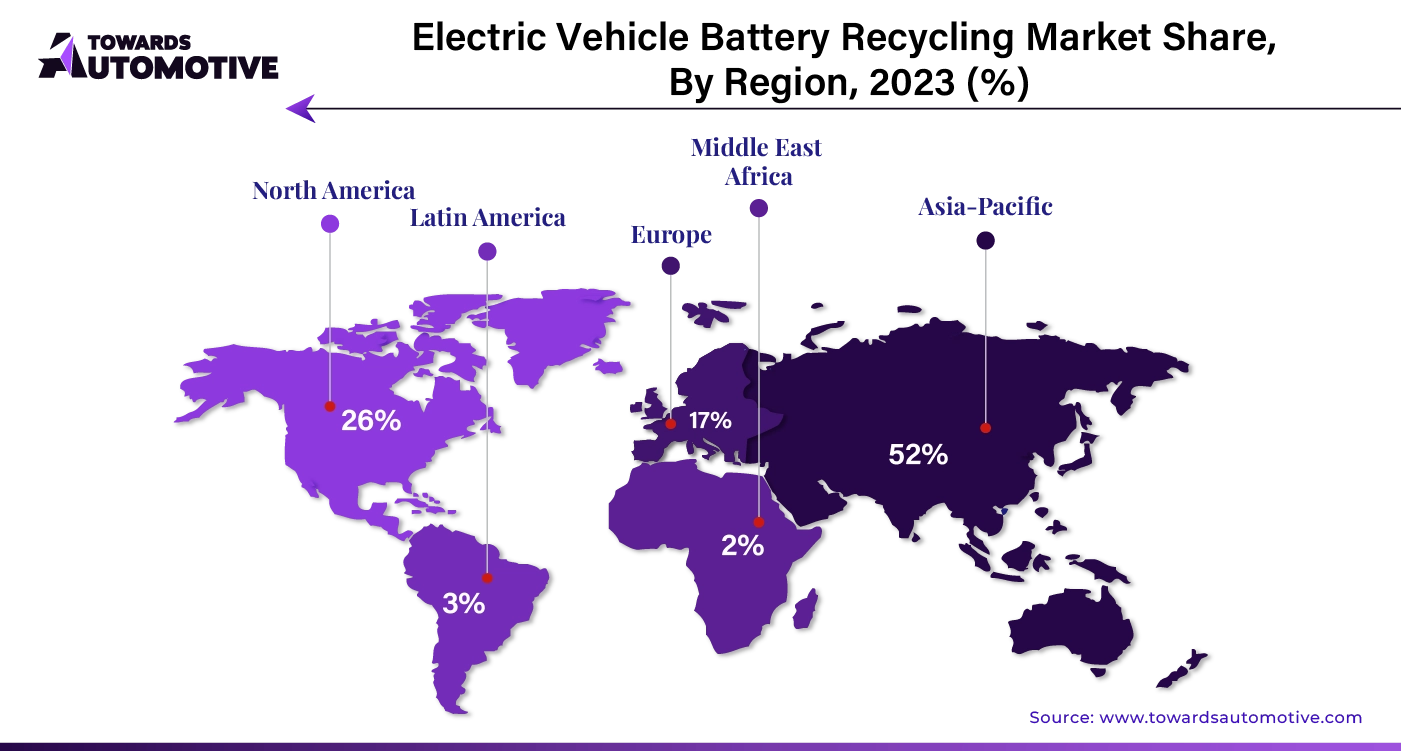
Asia Pacific dominated the electric vehicle battery recycling market share by 52% in 2023. Advancements in battery technology, a focus on the circular economy, and technological innovations are crucial drivers of the electric vehicle battery recycling market in Asia Pacific. As battery technologies evolve, with newer and more efficient batteries being developed, the volume of end-of-life batteries requiring recycling grows. This surge necessitates the development of advanced recycling technologies capable of efficiently processing these complex battery chemistries. The region’s commitment to a circular economy further propels market growth by emphasizing the importance of material recovery and waste reduction.
By promoting the reuse and recycling of battery materials, Asia Pacific aligns with global sustainability goals and reduces dependence on raw material extraction. Technological advancements, such as improved hydrometallurgical and pyrometallurgical processes, are enhancing the efficiency of material recovery from used batteries. These innovations not only make recycling more economically viable but also support the development of state-of-the-art recycling infrastructure. Together, these factors drive the expansion of the EV battery recycling market in Asia Pacific, ensuring a more sustainable approach to managing battery waste and supporting the region's growing EV industry.
Europe is the fastest growing region in the electric vehicle battery recycling market. High EV adoption rates, increasing investment in recycling infrastructure, and government incentives and support are pivotal drivers of the electric vehicle battery recycling market in Europe. As the adoption of EVs surges across the continent, driven by stringent emission regulations and attractive subsidies, the number of end-of-life batteries requiring recycling is rising sharply. This growing volume of used batteries creates a pressing need for efficient recycling solutions to manage waste and recover valuable materials.
To address this demand, substantial investments are being made in expanding and modernizing recycling infrastructure. New facilities and advanced technologies are being developed to enhance the efficiency and capacity of battery processing, improving material recovery rates and reducing operational costs.
Moreover, European governments are actively supporting the recycling industry through financial incentives, grants, and research funding. These initiatives encourage innovation and facilitate the deployment of cutting-edge recycling technologies, making the market more robust and sustainable.
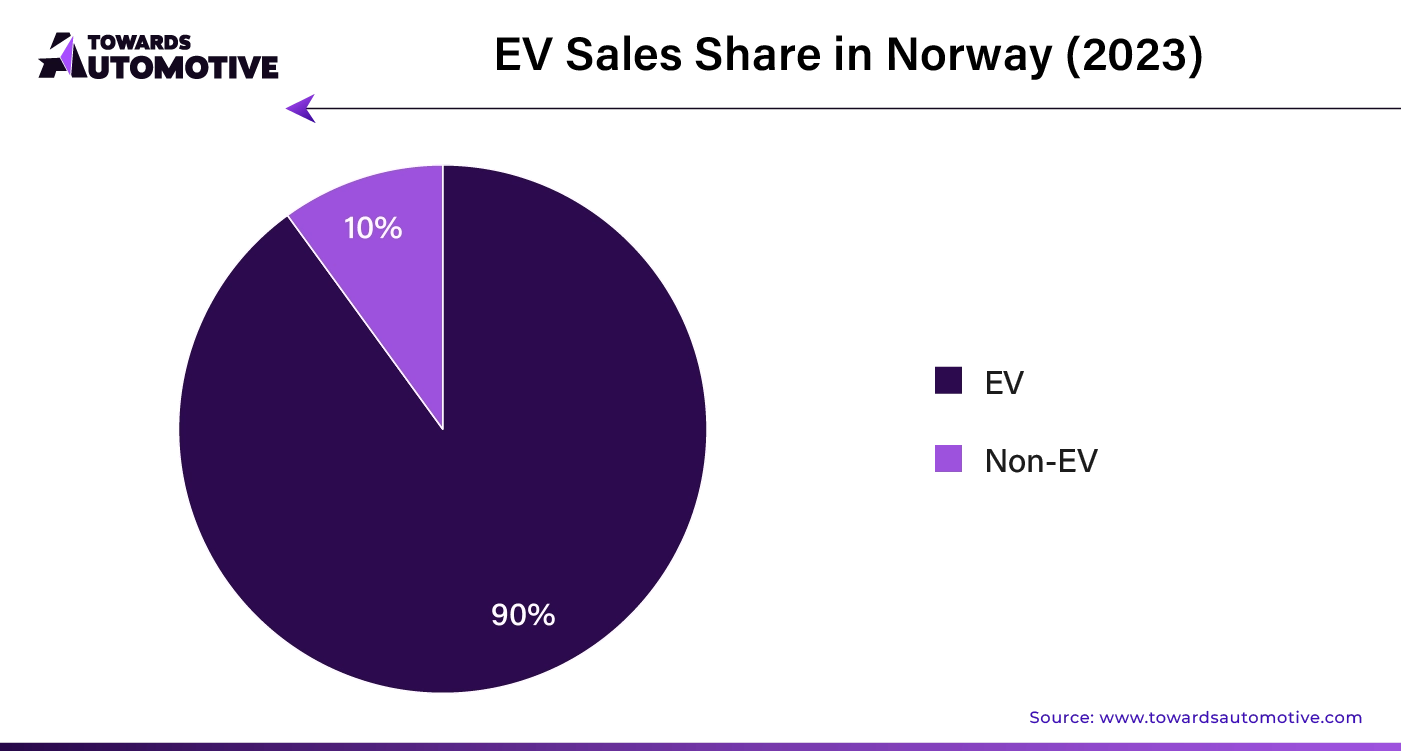
Recent Developments
By Chemistry
By Process
By Application
By End User
By Region
April 2025
April 2025
April 2025
April 2025
We offer automotive expertise for market projections and customizable research, adaptable to diverse strategic approaches.
Contact Us